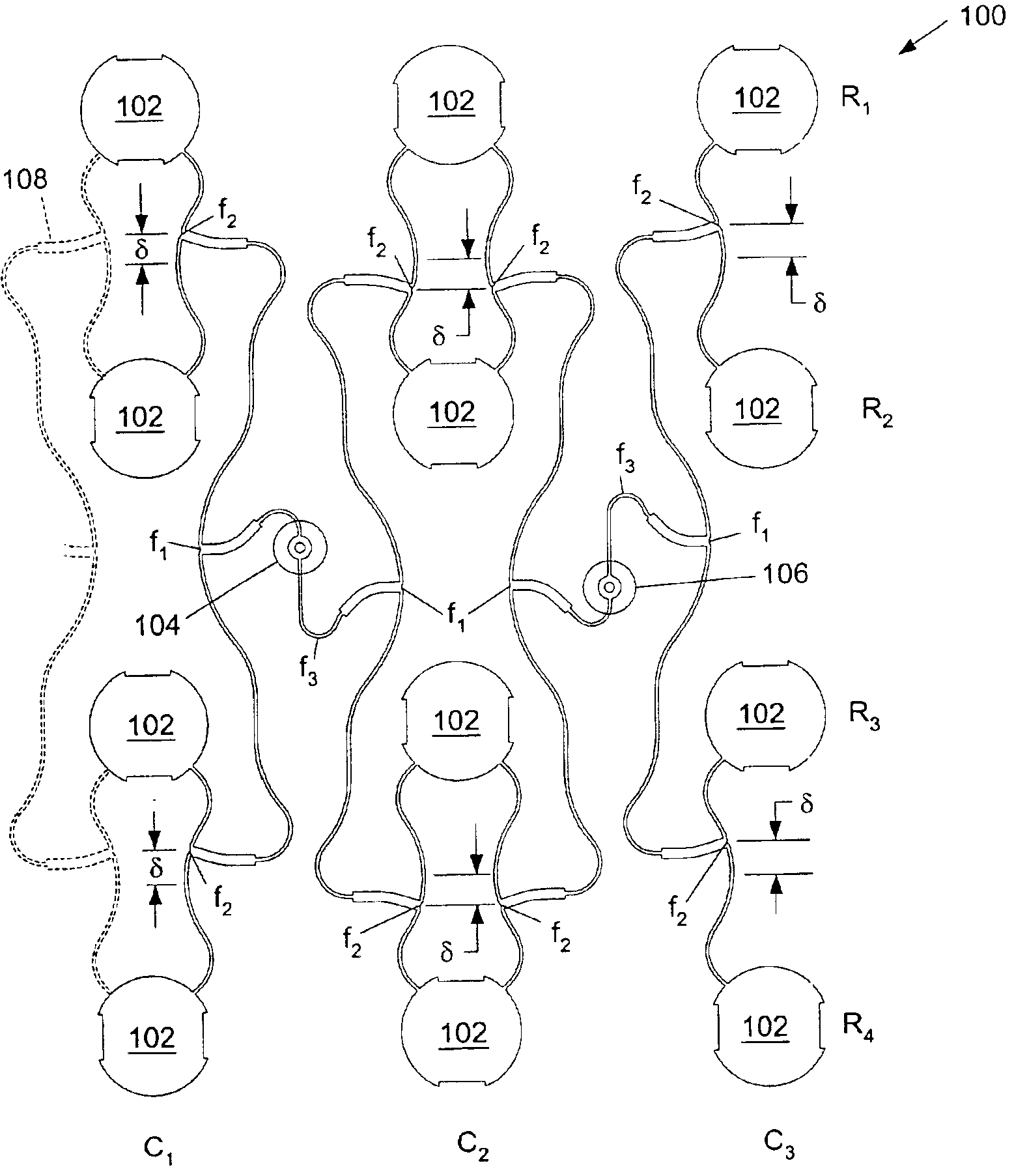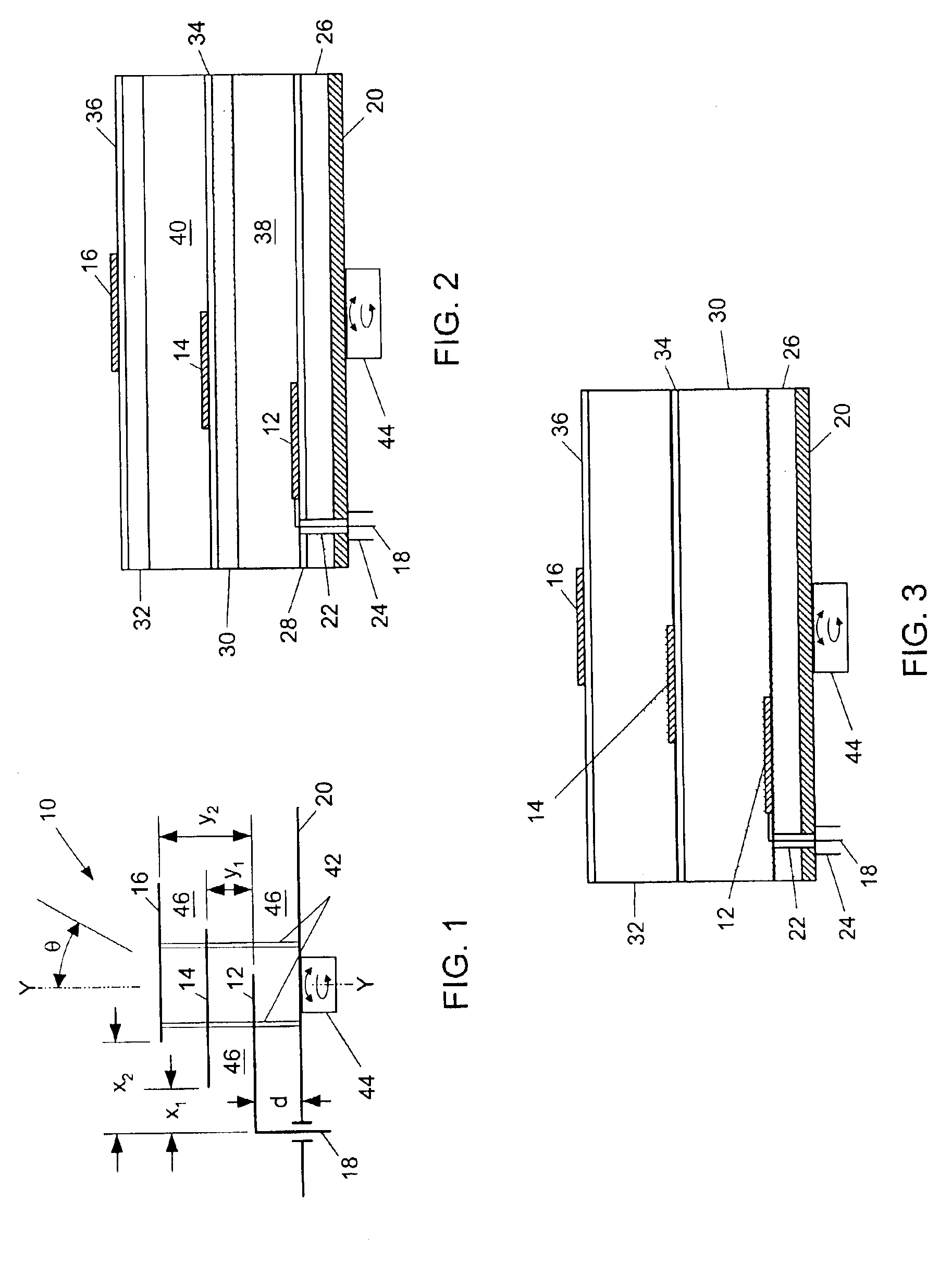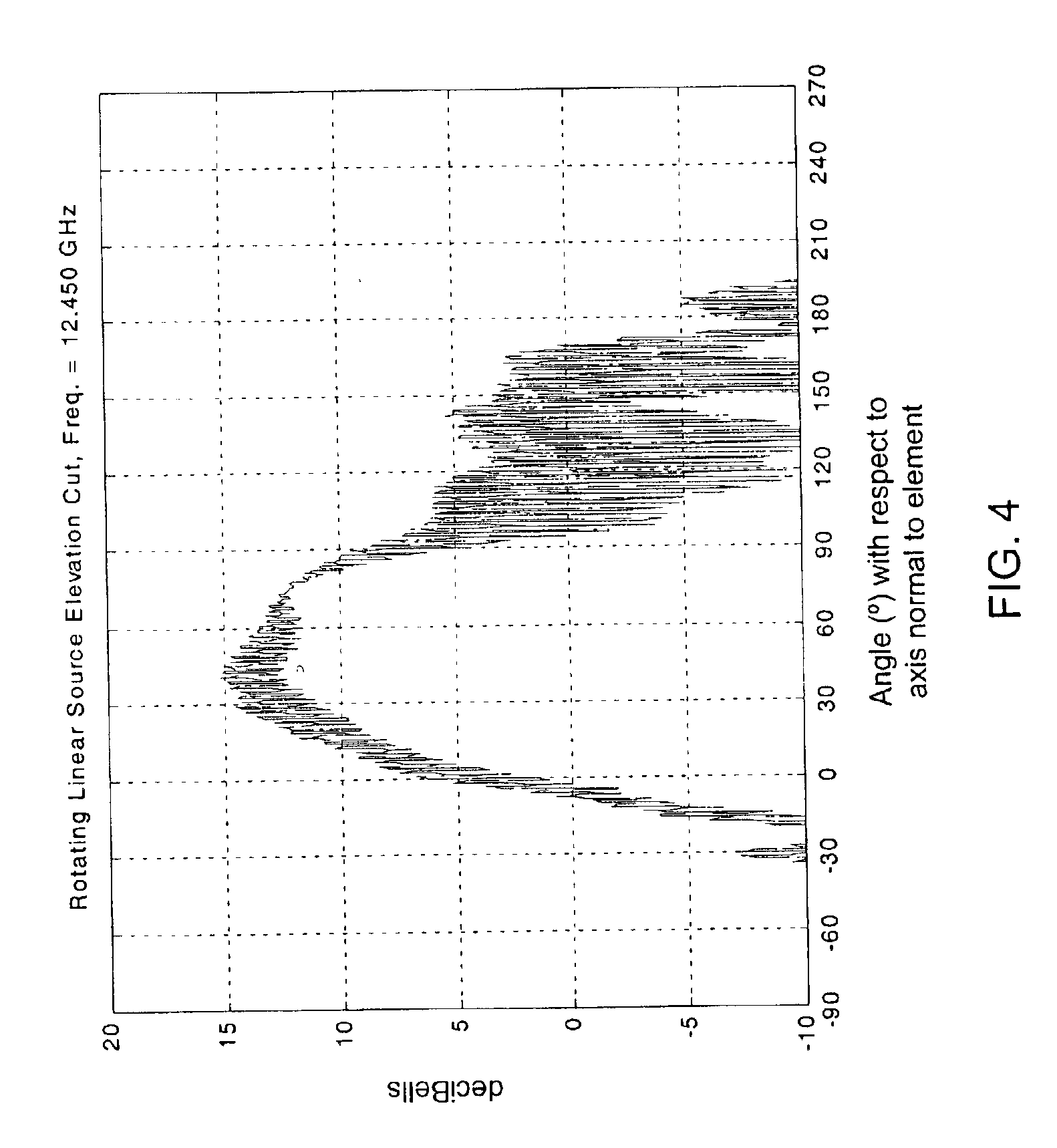Feed network and method for an offset stacked patch antenna array
a patch antenna array and feed network technology, applied in the field of patch antennas, can solve the problems of low-profile dish antennas that may only decrease the overall height by two to four inches, not optimally directed, and inadequate gain at typical satellite elevation
- Summary
- Abstract
- Description
- Claims
- Application Information
AI Technical Summary
Benefits of technology
Problems solved by technology
Method used
Image
Examples
Embodiment Construction
Referring now to FIG. 1, there is illustrated a schematic view of a stacked patch antenna 10. In the illustrative embodiment of FIG. 1, antenna 10 may include three antenna elements 12, 14 and 16. However, it can be understood that the number of elements may not be limited to three and that two or more elements may be used. The antenna elements may be fabricated of metal, metal alloy, or other conducting materials as are known in the art. In one embodiment, the elements 12, 14 and 16 are preferably microstrip antenna elements. Microstrip antenna elements are known in the art and are planar metallic elements that are formed on a continuous dielectric substrate using conventional integrated circuit manufacturing techniques, e.g., photolithography. Other forms and fabrications of antenna elements known to those of ordinary skill in the art also may be employed.
It will be appreciated that elements 12, 14 and 16 are shown in a side view in FIG. 1, with the planar surfaces of elements 12,...
PUM
 Login to View More
Login to View More Abstract
Description
Claims
Application Information
 Login to View More
Login to View More - R&D
- Intellectual Property
- Life Sciences
- Materials
- Tech Scout
- Unparalleled Data Quality
- Higher Quality Content
- 60% Fewer Hallucinations
Browse by: Latest US Patents, China's latest patents, Technical Efficacy Thesaurus, Application Domain, Technology Topic, Popular Technical Reports.
© 2025 PatSnap. All rights reserved.Legal|Privacy policy|Modern Slavery Act Transparency Statement|Sitemap|About US| Contact US: help@patsnap.com



